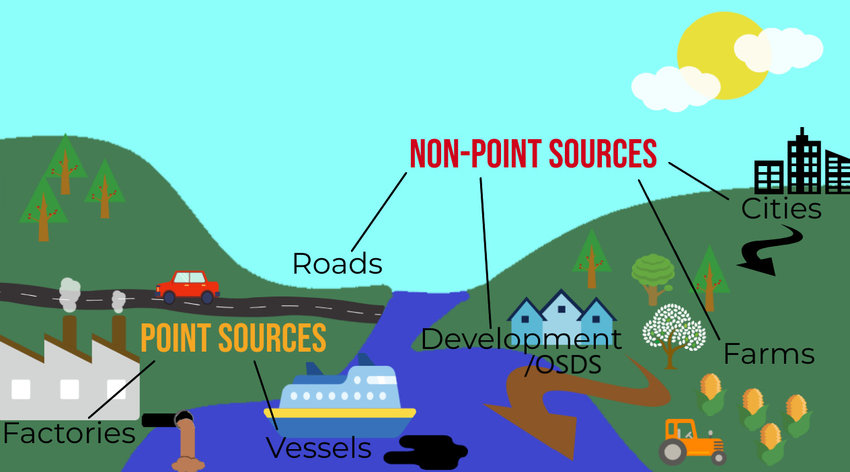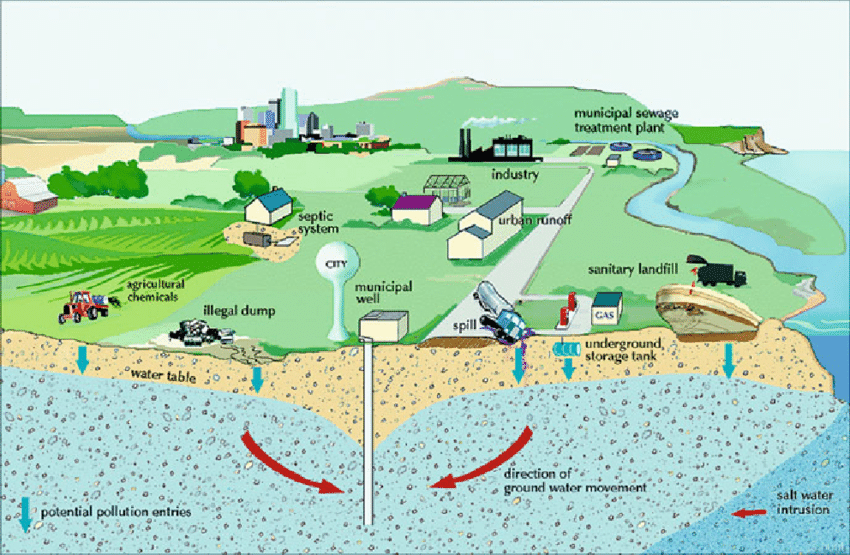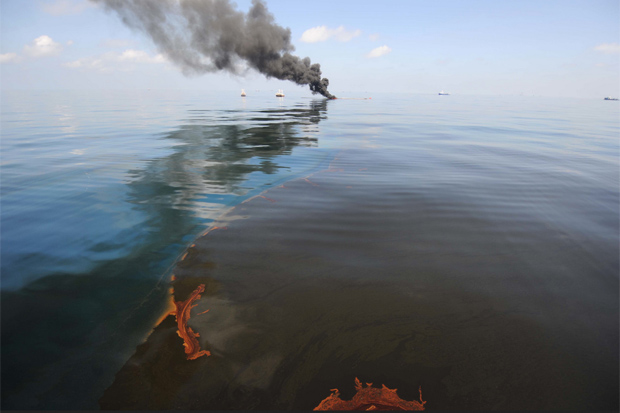Types of water pollution can be classified according to the pollutant sources or water sources. Accordingly, there are several types of water pollution. Water pollution is a significant global problem that needs continuous evaluation and updating of water resource policy at all levels (both international and individual aquifers and wells). Water pollution is the first cause of death and diseases worldwide.
When harmful elements, such as chemicals or microbes, pollute a stream, lake, river, aquifer, ocean, or other body of water, the water quality deteriorates and the water becomes hazardous to humans or the environment. Water pollution resolvers are available from a variety of Suppliers and Companies, as well as manufacturers and distributors, and there are many of them For Sale on Linquip.
Linquip’s website has a complete selection of water pollution services that will meet all of your needs. Linquip provides a list of Water Pollution Specialists who can help you meet all your requirements.
Water is often identified as polluted when it is damaged by human contaminants or is not suitable for human use such as drinking water, or undergoes significant changes in its capability to support its constituent communities, such as fish. Natural events such as volcanoes, storms, algae blooms, and earthquakes also cause notable water quality changes and ecological status.
Water pollution can come from various sources. If the contamination comes from an individual source, like an oil spill, it is referred to as point-source pollution. However, if the contamination comes from multiple sources, it is known as nonpoint-source pollution.
Most types of pollution impact the area near the source. Pollution can sometimes affect the environment hundreds of kilometers away from the source, of nuclear waste. This pollution is called transboundary pollution.
Types of Water Pollution
10 Types of Water Pollution are:
- Surface Water Pollution
- Point Source Pollution
- Non-Point Source Pollution
- Nutrients Pollution
- Oxygen Depleting
- Groundwater Pollution
- Microbiological Pollution
- Suspended Matter
- Oil Spillage
- Chemical Pollution
Although related to each other, groundwater and surface water resources are evaluated and studied in different ways. In contrast, groundwater can also supply surface water sources.
Surface Water Pollution
Surface water is referred to as natural water flowing on the surface of the earth, such as rivers, lagoons, lakes, and oceans. Contact of hazardous materials with surface water, dissolution, or physical mixing with water is known as surface water pollution. Sources of surface water pollution are generally divided into two classes according to their origin.

Point Source Pollution
Point source water pollution is the contaminants entering a waterway from an identifiable source, like a pipe or ditch. Discharges from a factory, a sewage treatment plant, or a city storm drain are examples of point-source water pollution.
The United States Clean Water Act (CWA) explains point sources for regulatory enforcement plans. The point source definition presented by CWA amended in 1987 includes municipal storm sewer schemes, industrial stormwater, and those from construction sites.
Non-Point Source Pollution
Non-point source pollution is contamination coming from dispersed sources. These sources include agricultural, stormwater runoff, and debris transported from land into waterways. Non-point source pollution is the foremost cause of water pollution in United States waters, but it is difficult to regulate because there is no single, identifiable origin.

Nutrients Pollution
Some wastewater, fertilizers, and sewage include high amounts of nutrients. If they are in water bodies, they help algae and weeds to grow in the water bed. That makes the water non-potable and even blocks filters. Too many algae use all the oxygen in the body of water, and other aquatic organisms in the water will die due to oxygen starvation.
This is the main cause of eutrophication of surface waters, in which surplus nutrients, generally nitrogen or phosphorus, lead to algal growth. Nutrient pollution sources include:
- Surface runoff from farm fields and pastures
- Discharges from septic tanks and feedlots
- Emissions from combustion
Excess nutrients may have adverse effects on the following items:
- Change of species composition
- Changes in food due to light limitation
- Undesired growth of algae
- Excess organic carbon, dissolved oxygen deficiency, and toxin production
- Threats to human health because of disinfection of by-products in drinking water
The use of synthetic fertilizers, the burning of fossil fuels, and the production of farm animals, particularly concentrated animal feeding operations (CAFO), have added great amounts of reactive nitrogen to the biosphere.
Phosphorus pollution (discharged by municipal sewage treatment plants and factories) is produced by excessive fertilizers and manure, especially when compounded by soil erosion.
The primary source of nutrient pollution in a single watershed depends on the predominant land uses. Resources may be from point sources, non-point sources, or both, including agricultural, urban or suburban, and industrial (wastewater discharges and air pollution emissions).
Oxygen Depleting
There are micro-organisms in the water bodies, aerobic and anaerobic organisms. When highly biodegradable objects that quickly decay are placed in the water, it stimulates more growth of micro-organisms, and they consume more oxygen in the water. When the oxygen is depleted, aerobic organisms begin to die, and anaerobic organisms grow more to create dangerous toxins like ammonia and sulfides.
Anoxic waters are locations of seawater, freshwater, or groundwater with depleted dissolved oxygen and are in a more critical state of hypoxia. The US Geological Survey describes anoxic groundwater as those with a dissolved oxygen concentration of fewer than 0.5 milligrams per liter. This condition is usually detected in areas that have limited water exchange. If the rate of organic matter oxidation by bacteria is higher than the supply of dissolved oxygen, anoxic conditions occur.
Although anoxic waters are a natural occurrence, human activities as byproducts of agricultural run-off and sewage discharge may cause that phenomenon.
Groundwater Pollution
Interactions between surface water and groundwater are complicated. As a result, groundwater pollution or groundwater contamination cannot easily be categorized as surface water pollution. Due to their nature, groundwater bodies are sensitive to contaminants from resources that may not directly impact surface water bodies. The separation of point and non-point sources may be inappropriate in some cases.

The study of groundwater pollution focuses on soil features and site geology, hydrogeology, and the characteristics of the pollutants. Groundwater contamination is occurred due to the following causes:
- Naturally happening (geogenic)
- On-site sanitation systems
- Fertilizers and pesticide
- Sewage
- Commercial and industrial leaks
- Hydraulic fracturing
- Landfill leachate
When humans use pesticides and chemicals in soils, they are washed by rainwater deep underground, causing pollution underground. This means that digging wells and boreholes to reach the water underground makes it necessary to evaluate groundwater pollution.
Microbiological Pollution
In general, microbiological water pollution is a natural sort of water pollution produced by microorganisms. Many microorganism types are living in water and cause diseases for land animals, fish, and humans. Microorganisms include bacteria, viruses, and protozoa. Some dangerous illnesses such as cholera are caused by microorganisms existing in the water. These diseases typically damage the people who live in poorer countries, as they do not have access to treated water.
Suspended Matter
Some contaminants do not dissolve in water because their molecules are too large to be mixed with the water molecules. These substances are called particulate matter and can often be identified as a source of water pollution.
The suspended particles ultimately settle, causing thick mud at the bottom. This is damaging to marine life on the floor of rivers and lakes. Biodegradable materials are often suspended in water and can induce problems by increasing the number of anaerobic microorganisms. Suspended toxic chemicals in water are harmful to the survival and growth of aquatic species.
Oil Spillage
The oceans can be polluted by oil through oil spills, routine transportation, runoffs, and dumping.
Oil spills consist of around 12% of the oil entering the oceans. The rest is through shipping, draining, and dumping. Oil leakage from a tanker is a critical problem because too much oil is spilled in one place. Oil spills make a much-localized problem but can be hazardous to local marine life such as fish and birds.
The oil cannot be dissolved in water and creates a thick sludge in the water. It suffocates fish, gets stuck in the feathers of seabirds, preventing them from flying, and blocks the light needed by aquatic plants for photosynthesis.

Chemical Pollution
Industrial and agricultural practice includes the use of many various chemicals that can run off into the water and make it polluted. Metals and solvents from industries can pollute lakes and rivers. These are toxic to a variety of aquatic species and may slow their growth, make them infertile, or even cause death.
Pesticides are used in agriculture to control weeds, fungi, and insects. Runoff of these pesticides causes water pollution and poisoning of aquatic life. Therefore, humans and animals that eat these infected fish are exposed to poisoning.
Petroleum is another type of chemical contaminant that typically pollutes water through oil spills when a ship breaks. Oil spills have only a localized effect on wildlife but can disperse to a broad area. The oil can kill many fish and stick to the feathers of marine birds, which causes them to lose their ability to fly.
Download Types Of Water Pollution PDF
Buy Equipment or Ask for a Service
By using Linquip RFQ Service, you can expect to receive quotations from various suppliers across multiple industries and regions.
Click Here to Request a Quotation From Suppliers and Service Providers
Read More on Linquip



